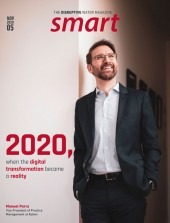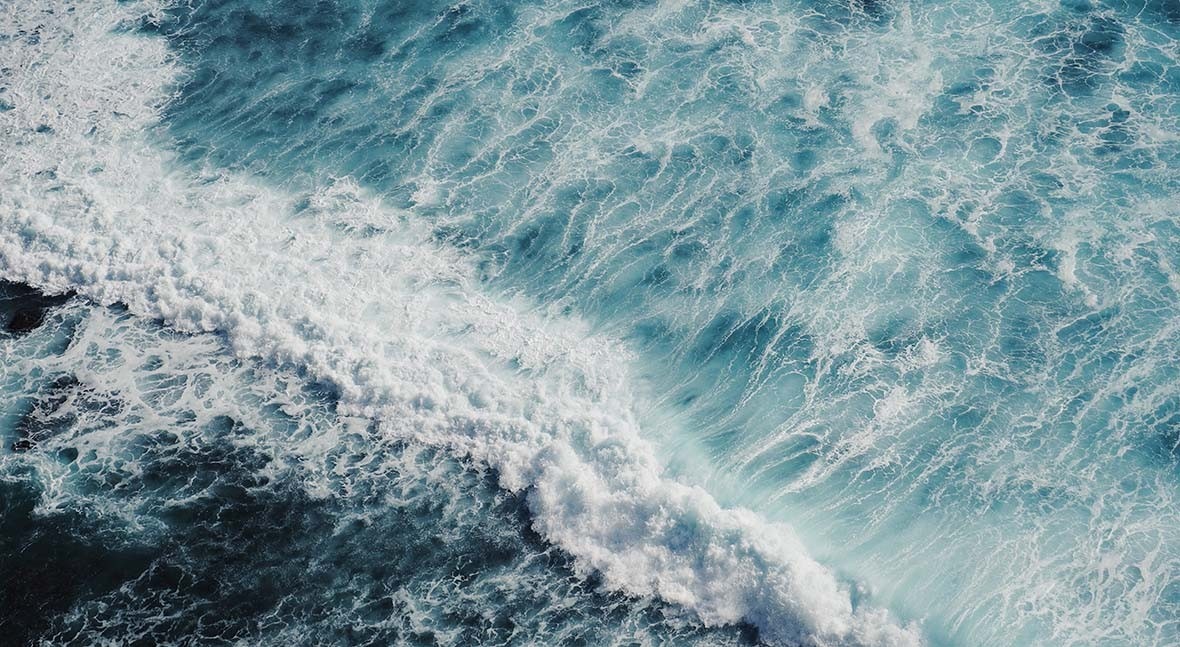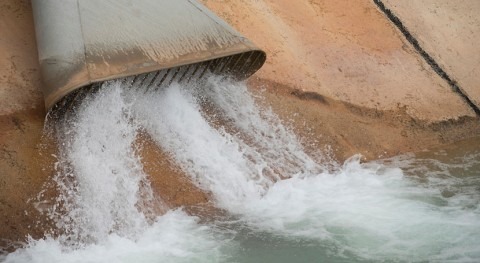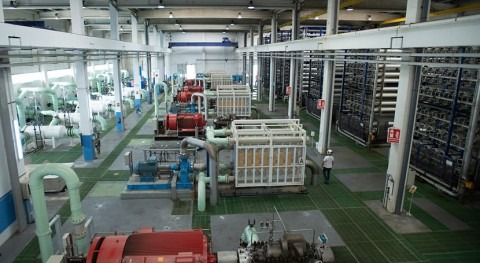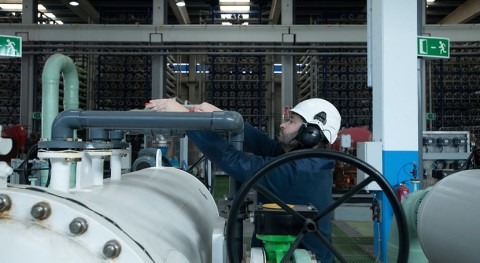A big part of the Zero Liquid Discharge (ZLD) argument is the treatment of high salinity (>60,000 mg/L) brines. Brine treatment is a low volume market but with an exciting prospect. Mainly due to a) the push from stricter environmental legislations, b) higher wastewater discharge fees, c) restricted groundwater withdrawal and d) local drought problems, industries worldwide search for more innovative solutions to reuse their brine streams.
The biggest part of the ZLD market (USD 257 m, 6.7% CAGR) is solidly dominated by thermal processes. Thermal processes utilize heat transfer to a boiling liquid with the intent to concentrate a non-volatile solute from a solvent, which is usually water, by boiling off the solvent. The usual process chain is to use an Evaporator (15-20 kWh/m3) that concentrates the stream up to 20% TDS and then a Crystallizer (50-90 kWh/m3) that concentrates the salts up to saturation levels.
Due to the fact that thermal processes have to deal with a high corrosive environment from hot brines and complex phase change operations, they have very high capital and operational expenses. That fact along with the previously mentioned drivers have pushed for innovative solutions which have to attune to the market characteristics.
ZLD large scale operations are few and far between. Most project opportunities for brine streams are about 10-100 m3/d which provide for a more consistent demand and come with a variety of case characteristics. Especially for mid-sized Evaporators the CAPEX skyrockets to 100-500 KUSD/m3 brine as the traditional cheaper Falling Film Evaporators are viable only for >100 m3/d.
As water professionals know, there’s no panacea for all the wastewater streams. Every case scenario is formulated with different aspects
A lot of effort has been put into producing more effective membranes (new materials and coatings) in order to reduce the brine volume. Although successful at lab scale, these efforts will need time to produce a reliable and affordable manufacturing process. That time is used by other technologies to reach maturity and claim a piece of the market. Technologies like electro-membrane processes, new novel RO configurations and chemical water extraction are getting traction by claiming references and finding the right niche applications to help them grow.
These innovative membrane technologies have invested in reducing the impact of sparingly soluble salts during concentrating brines. Reverse Osmosis (RO) membranes scale with usual suspects as silica and calcium sulphate which drop out of the solution as the stream starts concentrating. Solutions to this problem vary from softening the feedwater and increasing the pH in the second filtration pass, creating new membrane coatings and replacing the membranes at a faster pace, reversing flow to decrease scale formation or even introducing brine from later stages into the permeate stages to reduce the osmotic pressure required.

The S(mart) approach to do the latter has been proved by not trying to compare themselves to RO as they can never beat it for basic desalination. RO currently resides at 40-43% recovery and 2.9 kWh/m3 specific energy demand (with an aspect to drive it down to 2 kWh/m3 in the future). Most innovative processes have a hard replacing also the Crystallization unit as there isn’t yet a membrane process that can dry out the salts in a brine stream. So we have the 6%-20+% TDS range to deal with.
As the water professionals know well there’s no panacea for all the wastewater streams. Every case scenario is formulated with different aspects when it comes to contaminants, available budget/energy resources/timeline, and the local conditions pressing the end client to find a solution to their high salinity streams. Personally, I’d simplify every case to a CAPEX+OPEX vs ROI in order to see the wider picture. What should we do to decrease both terms and help the innovative technologies get a better foothold in the water market?
First and foremost we need to understand that going all the way to ZLD isn’t always the way. Minimum Liquid Discharge (MLD) sometimes makes more financial sense since removing the final 5 to 10% of liquid can prove horrendously costly. In order to understand if a certain case is appropriate for MLD the first question is if water reuse is needed. If it is so, then the MLD approach could be what is needed. If local legislations need to be met concerning effluent discharge, then MLD can be a part of the solution which might include ZLD/evaporation ponds/groundwater injection.
The next step is to identify your waste streams in terms of flow, their contaminants and their respective concentrations. Not every case requires the same treatment. By checking the waste streams, we can calculate a more economical and sustainable approach to each case. For example, condensate and stormwater require very little treatment, while waste streams with high concentrations of organic compounds, salts, metals and suspended solids are more likely to require extensive treatment.
The S(mart) approach for the innovative brine concentration technologies is a wider range of options to adjust to every case scenario
On the topic of contaminants of the wastewater streams and their respective concentrations, we should always be aware of potential water mining of valuable salts and rare earth minerals that might back up our technology proposal and sometimes don’t need to be dried up in order to lead to valuable products. This way the recovered materials could be sold and thus raise the profits of the treatment process. Alternatively, the recovered materials could be used within the industrial facility using the desalination process and so reduce the operation cost. The feasibility of the material recovery process from brine depends on the technical limitations of the available technologies and their energy and cost considerations, but also on the market fluctuations for the materials that are recovered.
Examples of water mining are elements like bromine, magnesium, potassium, rubidium and lithium, for which the main production is concentrated in very few countries. The bromine market is taking off due to the element’s uses in products like a) flame retardants, b) synthetic chemistry, c) biocides and d) oilfield chemicals. Magnesium is the third most common metal in construction, and its production with conventional methods is energy and greenhouse gas intensive. Increased concentration alone though is not the only parameter that will make the separation more attractive economically, so we are still in search of improved recovery methods.
Another topic to be aware of is the right exploitation of the available energy resources as with every case come different opportunities and restrictions. Availability for example of waste heat, vapor streams and/or renewable energy resources make sometimes innovative technologies that are lower on the commercial maturity scale stronger contenders for a brine treatment solution. In other cases, the absence of the above leads us to work on solutions with a minimal intake from the local energy grid. Innovative RO configurations have managed to drop the energy demand on the latter cases as much as 8 kWh/m3 for the treatment of a 7% TDS brine up to 20% TDS.
Last but not least is the use of chemicals and their customization. There are a lot of different ways current innovative membrane configurations try to get rid of the sparingly soluble salts. The wise use though of speciality antiscalants may allow for higher concentrations to be achieved. In some cases, they can even turn the brine into a food-grade product allowing for its use and thus ZLD can be reached without reaching high brine concentrations.
The S(mart) approach to a better future for the innovative brine concentration technologies is a wide range of available options in order to adjust to the peculiarities of every case scenario. I strongly believe that every process has its niche place in the market and it’s only a matter of time to find it or wait for the right commercial opportunity to appear. The way forward is full of hurdles for innovation but if we concentrate on optimization and the mining of valuable contaminants then we can make a difference in the commercial market.


